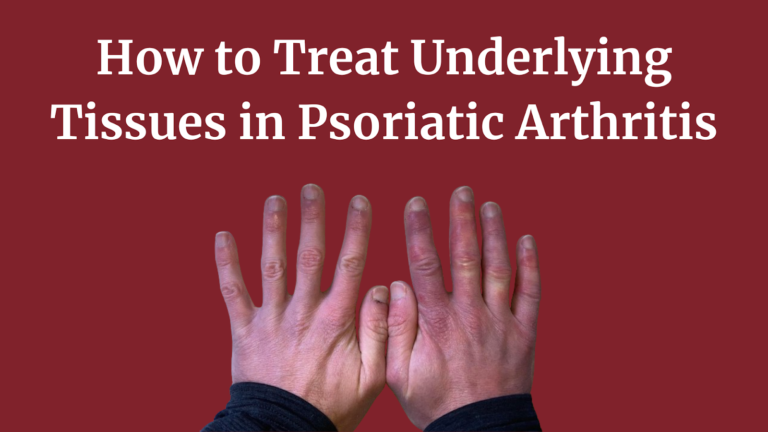[Source: Reddit]
You have heard about Psoriatic arthritis (PsA). It is one of the chronic diseases that go active on the skin and the joints.
Today, PsA is expected to be present in 112/100,000 adults, and persons having psoriasis are at the highest possible risk of developing PsA. [Source: Oxford Academic | The worldwide prevalence of psoriatic arthritis]
Since skin psoriasis may be related to joint inflammation, both symptoms of PsA must be treated. The main issue in treating PsA is managing the underlying tissue damage that can occur. So, our mission is to find the best treatment method that can heal people from PsA.
Since red light therapy has its natural healing ability, it has shown promise in reducing inflammation and improving skin condition.
The treatments are essentially:
- Nonsteroidal anti-inflammatory drugs (NSAIDs)
- Disease-modifying anti-rheumatic drugs (DMARDs)
- Biologics therapy
- Red light therapy
Understanding Psoriatic Arthritis and Its Impact on Underlying Tissues
[Source: Reddit]
What is Psoriatic Arthritis?
[Source: Mayo Clinic | Psoriatic arthritis]
The PsA has impacts on the following:
- Skin( Manifests as red scaly patches that feel itchy and painful)
- Joints (Causes inflammation and damage, which leads to swelling, stiffness, and motion restriction)
- Underlying Tissues (Afftes the tissues such as tendons, ligaments, and cartilage; this poses joint damage and disability)
The Role of Inflammation in Tissue Damage
Inflammation is a significant cause of tissue damage in PsA. When the immune system attacks the joints and surrounding tissues, it releases inflammatory substances that can cause:
- Joint erosion
- Bone Damage
- Tendinitis and bursitis
- Joint damage
- Systemic effects
What Are the 5 Types of Psoriatic Arthritis?
Psoriatic arthritis comes in various ways, attacking different joints and tissues.
Here are the five main types:
How Does a Rheumatologist Test for Psoriatic Arthritis?
- Diagnostic Process
A rheumatologist is a specialist who treats joint disease. He/She is the one who helps patients who are suffering from PsA. They use a combination of physical examinations, blood tests, image studies, and medical assessments.
These are the steps they use to diagnose arthritis patients.
- Physical Examination
- Skin Examination: The rheumatologist begins by checking your skin for manifestations of psoriasis skin ailment. They will then assess whether the red patches they see indeed indicate psoriasis.
- Joint Examination: If you have inflammation in your joint, it will also be evaluated. The doctor will look at the inflamed joint, how tender it is, and its flexibility of movement. Abnormalities in bone, such as erosion and joint deformity, will also be considered.
- Blood Tests
- CRP and ESR tests will measure the inflammation of your body. The elevated levels will indicate the presence of PsA.
- RF and anti-CCP tests were primarily used for rheumatoid arthritis. However, they also provide accurate results in some cases of PsA. (Source: NCBI)
- Imaging Tests
- An X-ray can be useful for the determination of joint area damages such as bone spurs or the decrease of the joint space.
- MRI, on the other hand, offers better resolution of joint structures and more surrounding tissues.
- Ultrasound can be useful in identifying inflammation in your joints and tendons.
What Are the Early Warning Signs of Psoriatic Arthritis?
How early symptoms indicate underlying tissue inflammation?
- Joint pain and swelling indicate inflammation
- Skin condition changes because of inflammation
- Fatigue and overall weakness due to chronic inflammation
Importance of Early Diagnosis
- It will allow you to have better treatment and timely intervention and slow down joint damage.
- Treating PsA early can reduce complications. It can save you from joint deformity, disability, and systemic effects.
How untreated early signs can lead to significant tissue damage?
- Chronic inflammation can lead to erosion if not treated timely. It can also damage the protective tissues that cushions the joints.
- Inflammation can damage the underlying bones, which can make the ints go with deformity and instability.
- Untreated PsA can affect other organs and systems in the body, including the heart, lungs, and kidneys.
Psoriatic Arthritis Self-Care: Protecting Underlying Tissues
Exercise and Physical Therapy
- Low-impact exercise is the best way to maintain joint health in better condition and strength. These exercises won’t even put too much strain on the joints.
- Physical therapy is another way to provide personalized plans. By teaching proper mechanics, you can manage your pain.
Stress Management
- Stress has a big role in exacerbating the symptoms of PsA and making the issue of inflammation bad.
- Stress can be reduced, and this is one of the ways that can be helped through stress reduction means. These techniques will assist in stress control and thus enhance well-being.
- Ensure you have slept well and are well-hydrated to minimize stiffness and tiredness.
What is the Best Pain Medication for Psoriatic Arthritis?
[Disclaimer: The following medications suggested for different medical treatments will be discussed in this section. Before using any of the medicines from here, it is advisable to seek advice from your doctor.]
What is the Most Common Treatment for Psoriatic Arthritis?
The question remains: How can you help with this disease? According to our research, doctors’ common treatments for psoriatic patients mainly focus on controlling inflammation and preventing joint damage. Their sole purpose with these treatments is to reduce the symptoms.
These treatment often include:
- Nonsteroidal anti-inflammatory drugs (NSAIDs) and Disease-modifying anti-rheumatic drugs (DMARDs) both help reduce pain and slow the progression of PsA. That is why these two are called first-line treatments for PsA.
- On the other hand, biologics and a few targeted therapies are used as advanced treatment options for PsA. These therapies usually block the pathways from receiving specific proteins. This way, the treatment effectively manages PsA and prevents joint damage. (Source: Psoriatic arthritis: Diagnosis and treatment)
Red light Therapy: Though not evaluated as extensively as other treatments for PsA, red light therapy has useful applications and decreases skin inflammation.
An intervention study was conducted in 2017 to investigate the effectiveness of NIR light therapy in psoriasis treatment. The study revealed that light therapy, with its optimal penetration depth and control of cellular functions, might effectively treat psoriasis.
The study suggests that NIR light may effectively manage Psoriatic arthritis due to its ability to penetrate deeper into the skin and decrease inflammation in deeper layers. (Source: A clinical review of phototherapy for psoriasis – PMC)
Frequently Asked Questions
What is the best treatment for psoriatic arthritis?
There is no exact answer to this question. A combination of medication, a healthy lifestyle, and specific therapies can often work better as a treatment.
Can psoriatic arthritis be reversed?
While there is no cure, you can still manage the intensity if you want to. Several patients diagnosed with PsA said the symptoms can improve or go into remission.
How does psoriatic arthritis affect tissues?
PsA causes joint inflammation, erosion of cartilage, and damage to bones and tendons.
What are the newest treatments for psoriatic arthritis?
Biologics and red light therapy are among the newest treatments, offering more precise immune system targeting.
How can I manage psoriatic arthritis naturally?
- Convert to a healthy diet lifestyle.
- Daily exercise
- Stress management
- Skincare
What is the underlying cause of psoriatic arthritis?
The exact cause is unknown, but it is believed to be an autoimmune disorder. This disorder causes the immune system to attack healthy cells mistakenly.
How do you treat psoriatic arthritis joint damage?
- Treatment focuses on managing pain
- Reducing inflammation
- Preventing further damage
Final Thoughts
Psoriatic arthritis is a complex condition. Although it isn’t curable from the root, treatments can still lessen its effects. By combining traditional treatments with emerging therapies like NIR light, you can hope for improved symptoms and better health.

Daniel J. Morgan is the founder of Invidiata Magazine, a premier publication showcasing luxury living, arts, and culture. With a passion for excellence, Daniel has established the magazine as a beacon of sophistication and refinement, captivating discerning audiences worldwide.





